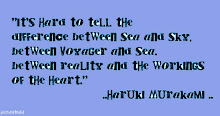- I wanted the arrows to point to the right, SAW them pointing to the right, and am GOING to the right
- I wanted the arrows to point to the left, SAW them pointing to the left, and am GOING to the left
- I forgot the instructions. Can I go back please?
Have you pick one of the statement above? I have chose point 2 of the above choices.
Here are the explanation about what your will said about you...only by looking at the image above. All the explanation was made by SERENDIP.
The explanation for point 1 and 2:
CONGRATULATIONS. You have just taken an action which is not determined by anything else (since the figure can be seen either way) and which you controlled (since you decided which way to see the figure). The observations not only suggest that you have free will (a useful thing to know in other, perhaps more earth-shaking situations), but reveal some additional interesting characteristics of this attribute.
There is some chance that when you first saw the figure together with the two buttons, you did not in fact immediately see the arrows pointing in the direction in which you had decided to see them pointing. What this indicates is that the power of free will does not extend to determining what you see; what you see at any given time is determined by actions of your brain which you cannot fully control (and of which you are not aware). What you were, however, able to do is to withhold action until you did see the arrows pointing in the direction you had previously chosen. What this indicates is that one part of your brain (the part that contains YOU) is capable of observing the variable inputs of another part of your brain (the part that is responsible for what you see) and deciding whether or not to act based on the perception offered at any given time. This may be a less potent "free will" than you might have wished you had but, if you think about it for a while, its actually not bad at all.
The explanation for point 3:
Ambiguous figures, of which the Serendip logo (circa 1994-95) is one example, make possible some interesting observations bearing on the existence and meaning of "free will". In most people's minds, "free will" has two relatively distinct properties. The first is the idea that what one does is in some sense "free", that is "not determined by something else". The second is the idea that one can onself control what one does.
Whether one sees right of left pointing arrows most easily can be influenced by details of the constuction of the figure (colors, exact shapes, and so forth), previous experiences with other figures, stable personal preferences, and mood. The important point, however, is that with all of these held constant (as they are as you look at the figure right at the moment), the figure can still be seen in either of two ways. In short, your perception of the figure is variable in a way that seems "not to be determined by anything else".


















No comments:
Post a Comment